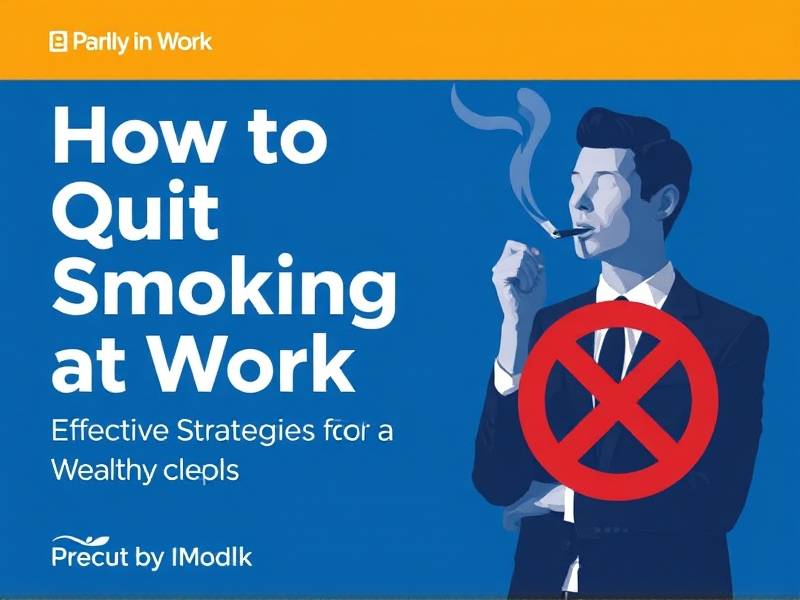How to Quit Smoking at Work: Effective Strategies for a Healthy Workplace
Introduction: The Importance of Smoking Cessation in the Workplace

In today's health-conscious world, the workplace is not just a place for productivity but also for fostering a healthy environment. Smoking cessation programs have become increasingly important as they not only improve the health of employees but also create a more positive and productive work culture. If you're looking to quit smoking at work, here are some effective strategies that can help you on your journey to a smoke-free life.

1. Set a Clear Quit Date
The first step in quitting smoking is to set a clear quit date. This should be a date that gives you enough time to prepare mentally and physically for the challenge ahead. Make sure it's realistic and achievable.
2. Create a Support System
Quitting smoking is much easier when you have support from friends, family, and colleagues. Consider joining a smoking cessation group or finding an accountability partner at work who can help keep you motivated.
3. Utilize Workplace Resources
Many workplaces offer resources to help employees quit smoking, such as counseling services, nicotine replacement therapy (NRT), and wellness programs. Take advantage of these resources to increase your chances of success.
4. Implement Nicotine Replacement Therapy (NRT)
NRT can be an effective tool in managing withdrawal symptoms and cravings. Options include nicotine gum, lozenges, patches, inhalers, and nasal sprays. Consult with your healthcare provider to find the right NRT product for you.
5. Develop New Habits
Smoking often becomes associated with certain routines or habits at work. Replace these with healthier alternatives like taking short walks during breaks or engaging in stress-reducing activities like deep breathing exercises or meditation.
6. Manage Stress
Stress can be a major trigger for relapse when trying to quit smoking. Find healthy ways to manage stress such as exercise, yoga, or mindfulness techniques.
7. Stay Hydrated and Eat Healthily
Drinking plenty of water and eating nutritious meals can help alleviate withdrawal symptoms and keep your energy levels up throughout the day.
8. Track Your Progress
Keep a journal or use an app to track your progress as you quit smoking at work. Celebrate small victories along the way to stay motivated.
Conclusion: A Healthier You Means a Healthier Workplace
By implementing these strategies, you can effectively quit smoking at work and contribute to a healthier workplace environment for everyone involved. Remember, every step towards quitting is progress—embrace it and keep moving forward on your journey to better health.
For more information on smoking cessation resources and support, visit Healthline or American Lung Association.
